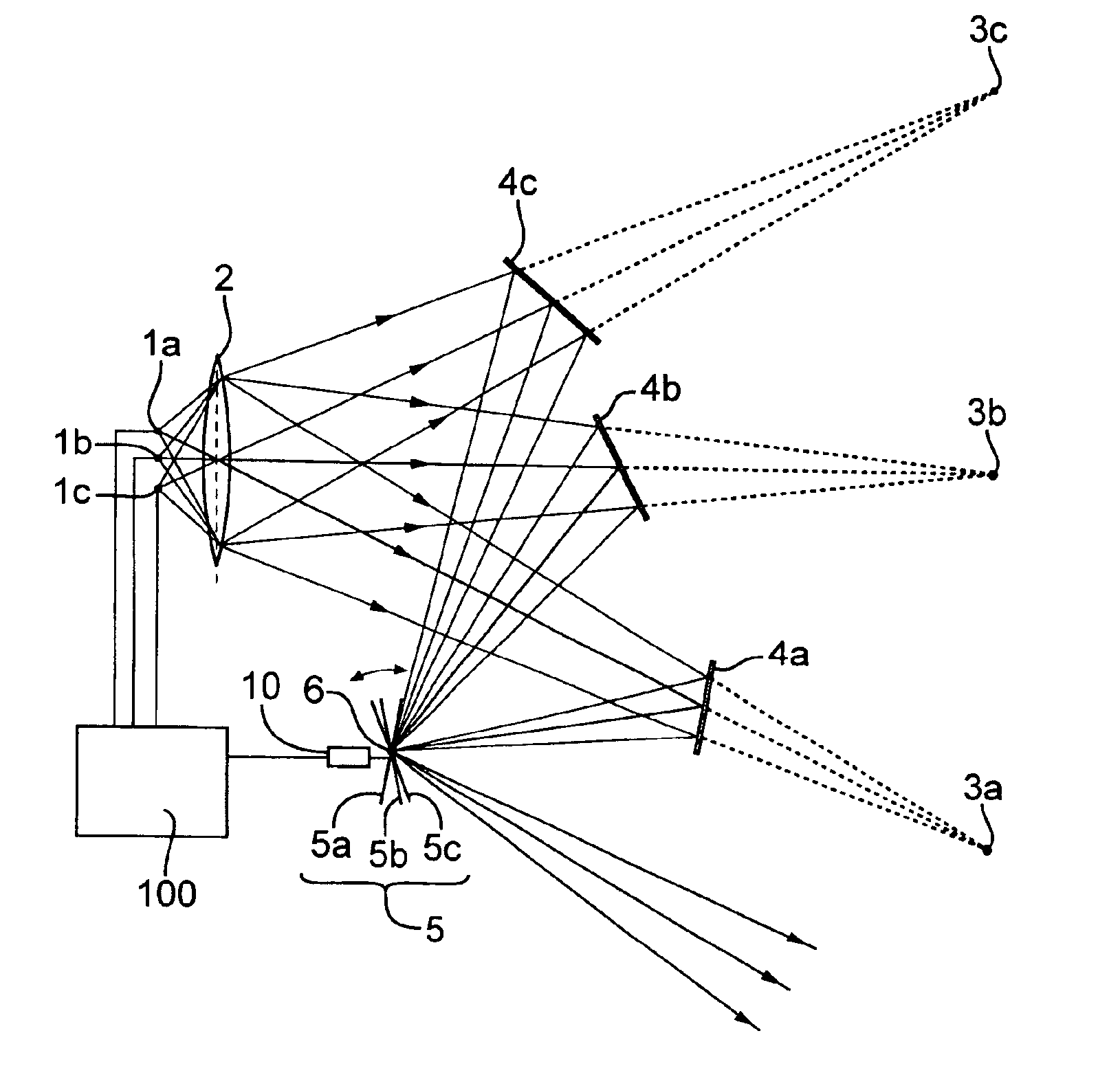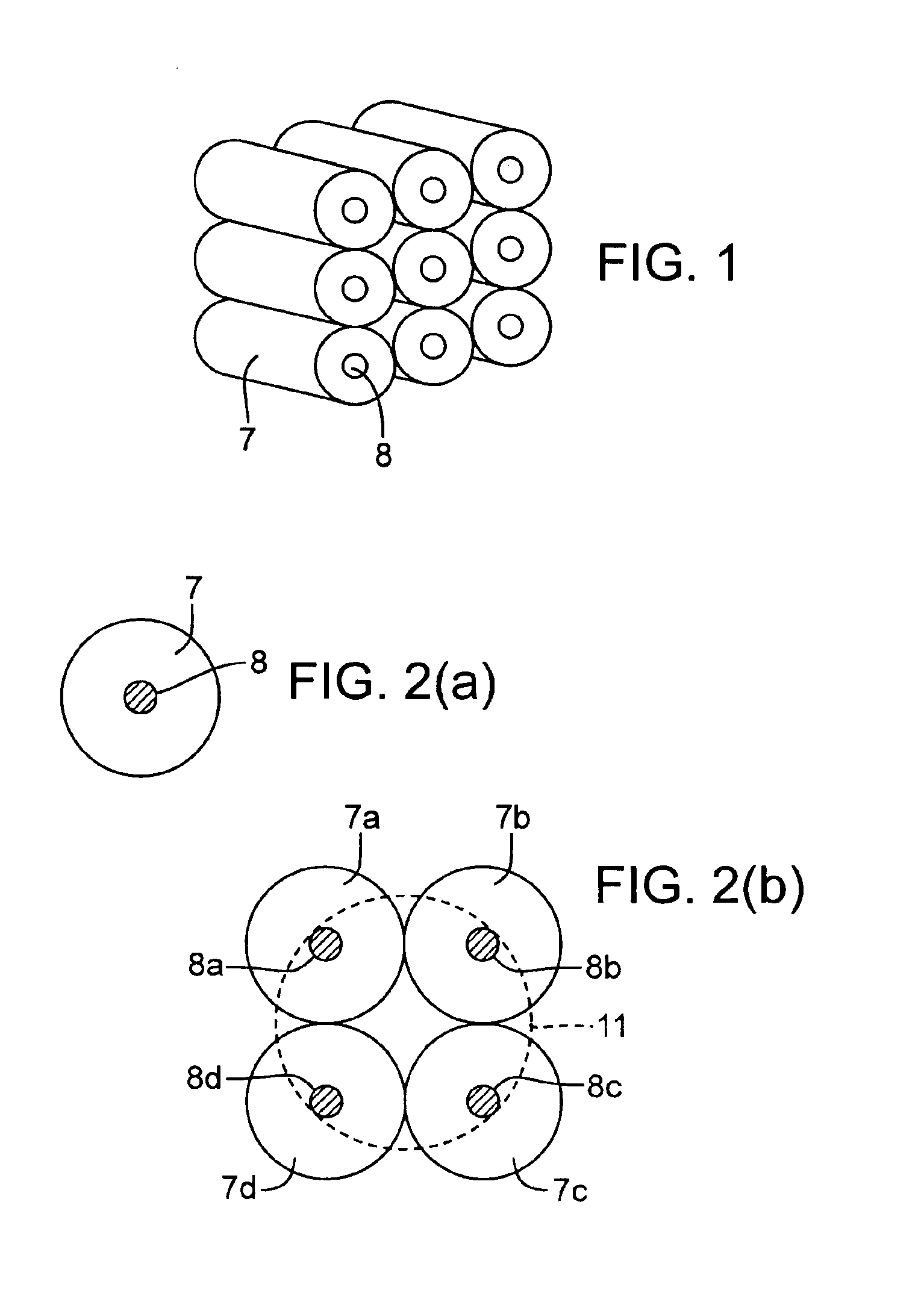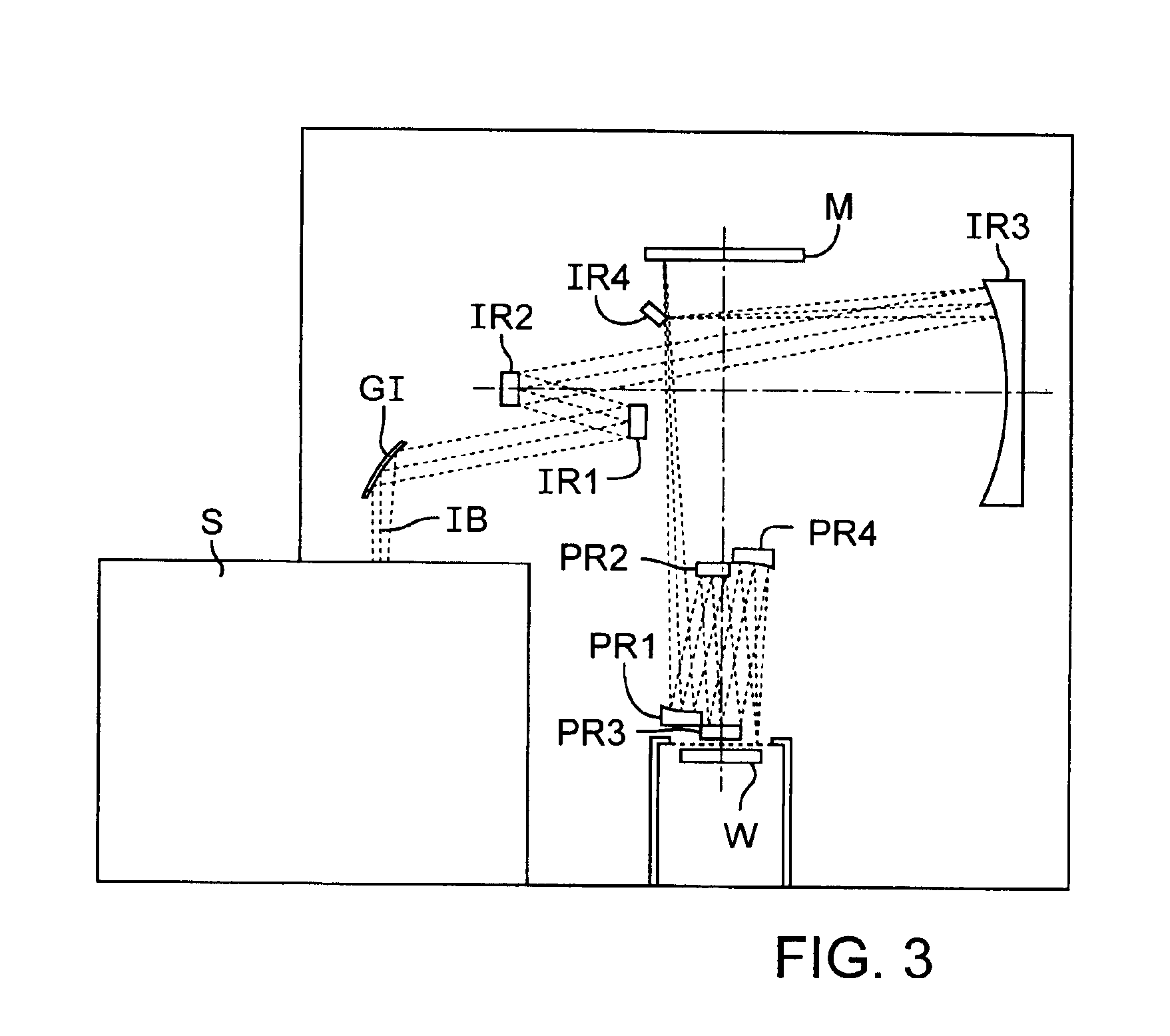High-luminosity EUV-source devices for use in extreme ultraviolet (soft X-ray) lithography systems and other EUV optical systems
a technology of euv source devices and optical systems, applied in the field of high-luminosity euv source devices for use in extreme ultraviolet (soft x-ray) lithography systems and other euv optical systems, can solve the problems of large amount of expense and effort, large amount of sr sources, and burdensome resolution limitations of optical (vuv) microlithography, and achieve the effect of increasing the usable quantity of ligh
- Summary
- Abstract
- Description
- Claims
- Application Information
AI Technical Summary
Benefits of technology
Problems solved by technology
Method used
Image
Examples
Embodiment Construction
A schematic optical diagram of an embodiment of an X-ray microlithography system that utilizes a soft X-ray (SXR or EUV) source device S is shown in FIG. 3. The depicted system comprises the EUV-source device S, an illumination-optical system, a reticle stage (not shown but well-understood in the art) for holding a reticle M, a projection-optical system, and a substrate stage (not shown but well-understood in the art) for holding a substrate W (e.g., semiconductor wafer). The SXR-source apparatus generates an illumination beam IB of SXR (EUV) light.
The illumination beam IB propagates to the illumination-optical system comprising mirrors GI, IR1, IR2, IR3, IR4. The mirror GI usually is a grazing-incidence mirror that reflects the grazing-incident illumination beam IB from the source apparatus S. (Alternatively, the mirror GI can be a multilayer-film mirror.) The mirrors IR1, IR2, IR3, IR4 are multilayer-film mirrors each including a surficial multilayer film exhibiting high reflectiv...
PUM
| Property | Measurement | Unit |
|---|---|---|
| exposure wavelength | aaaaa | aaaaa |
| diameter | aaaaa | aaaaa |
| diameter | aaaaa | aaaaa |
Abstract
Description
Claims
Application Information
 Login to View More
Login to View More - R&D
- Intellectual Property
- Life Sciences
- Materials
- Tech Scout
- Unparalleled Data Quality
- Higher Quality Content
- 60% Fewer Hallucinations
Browse by: Latest US Patents, China's latest patents, Technical Efficacy Thesaurus, Application Domain, Technology Topic, Popular Technical Reports.
© 2025 PatSnap. All rights reserved.Legal|Privacy policy|Modern Slavery Act Transparency Statement|Sitemap|About US| Contact US: help@patsnap.com



